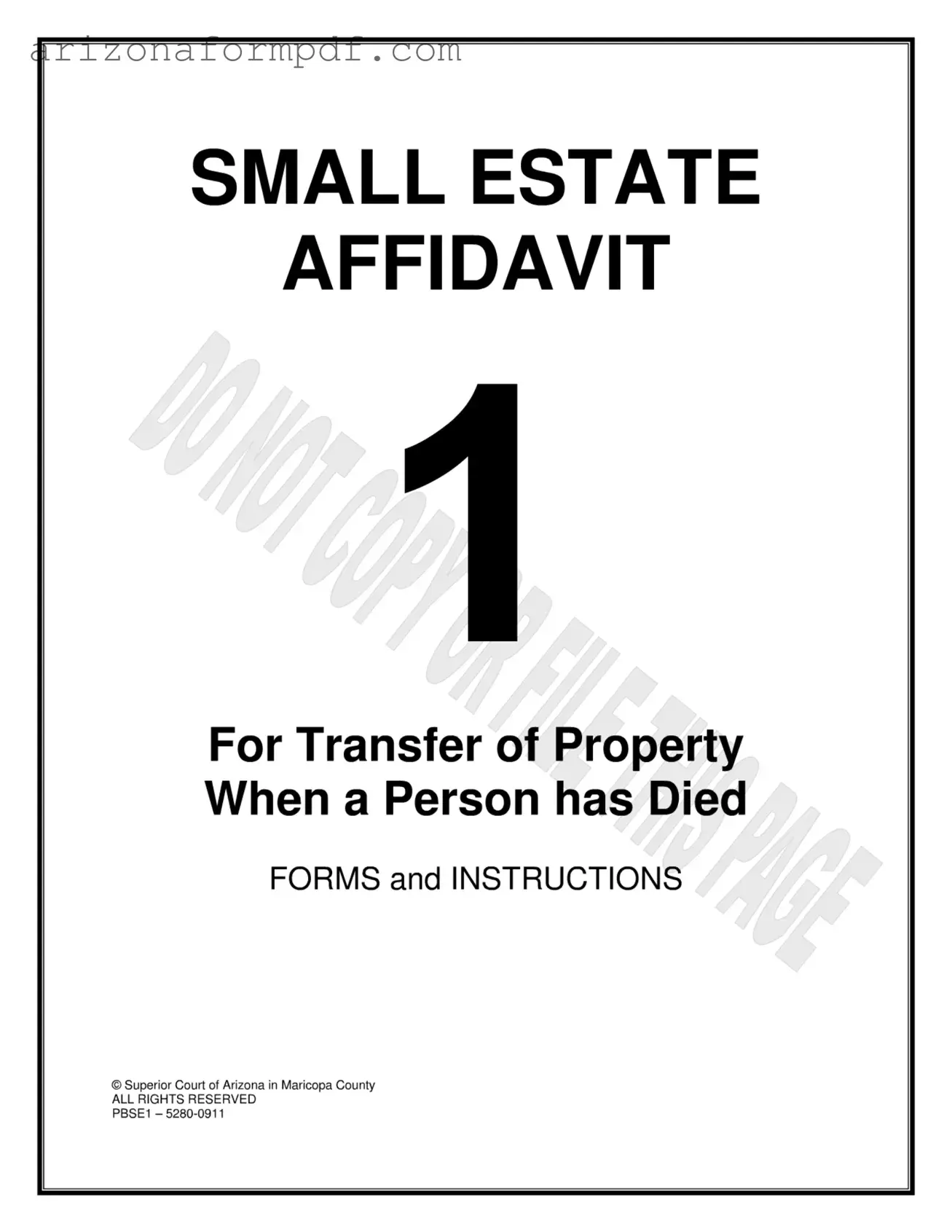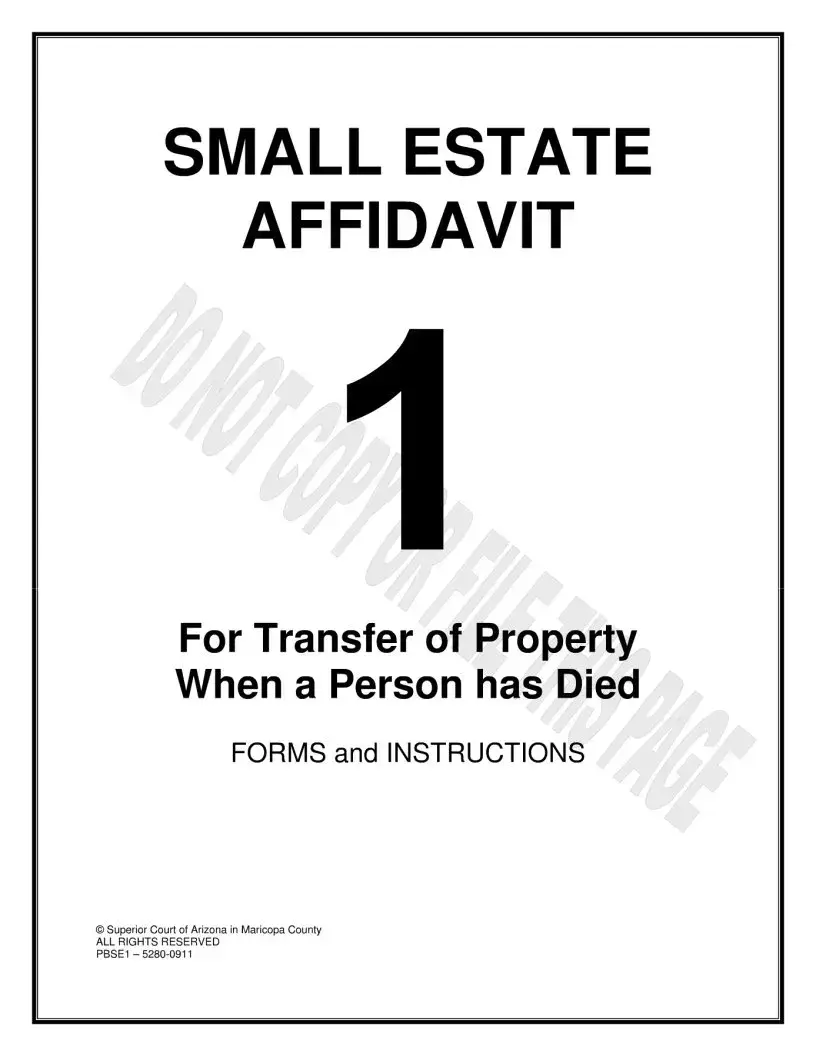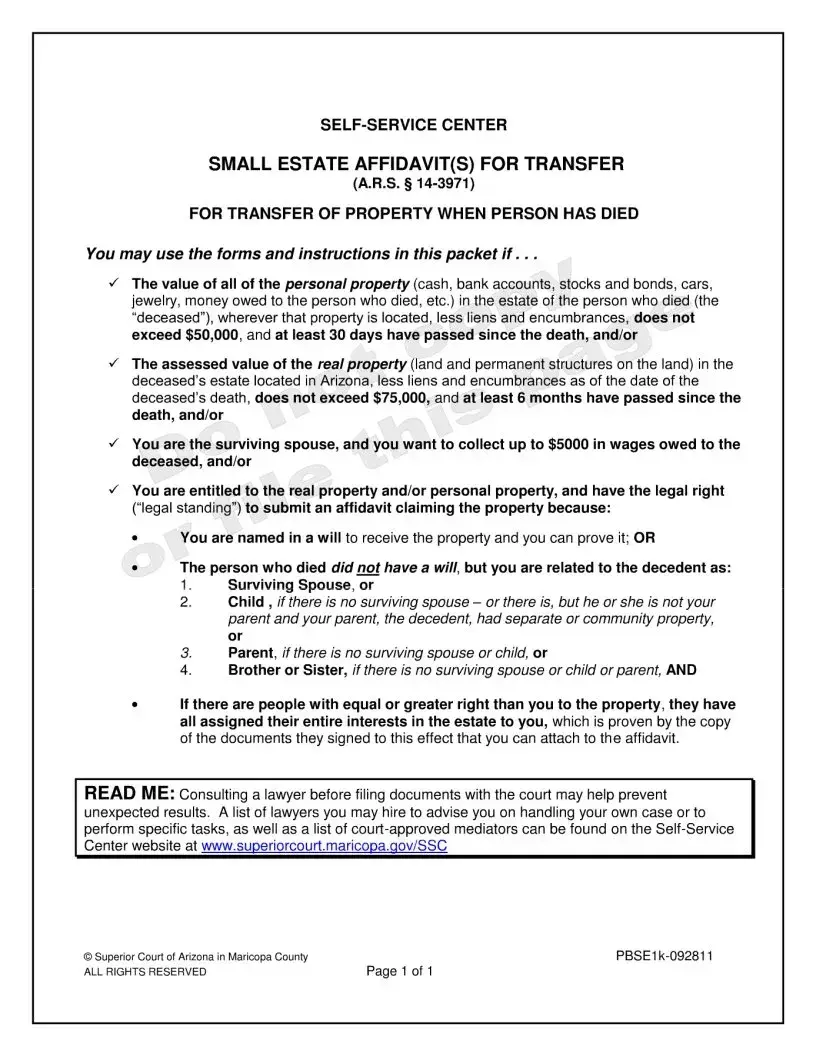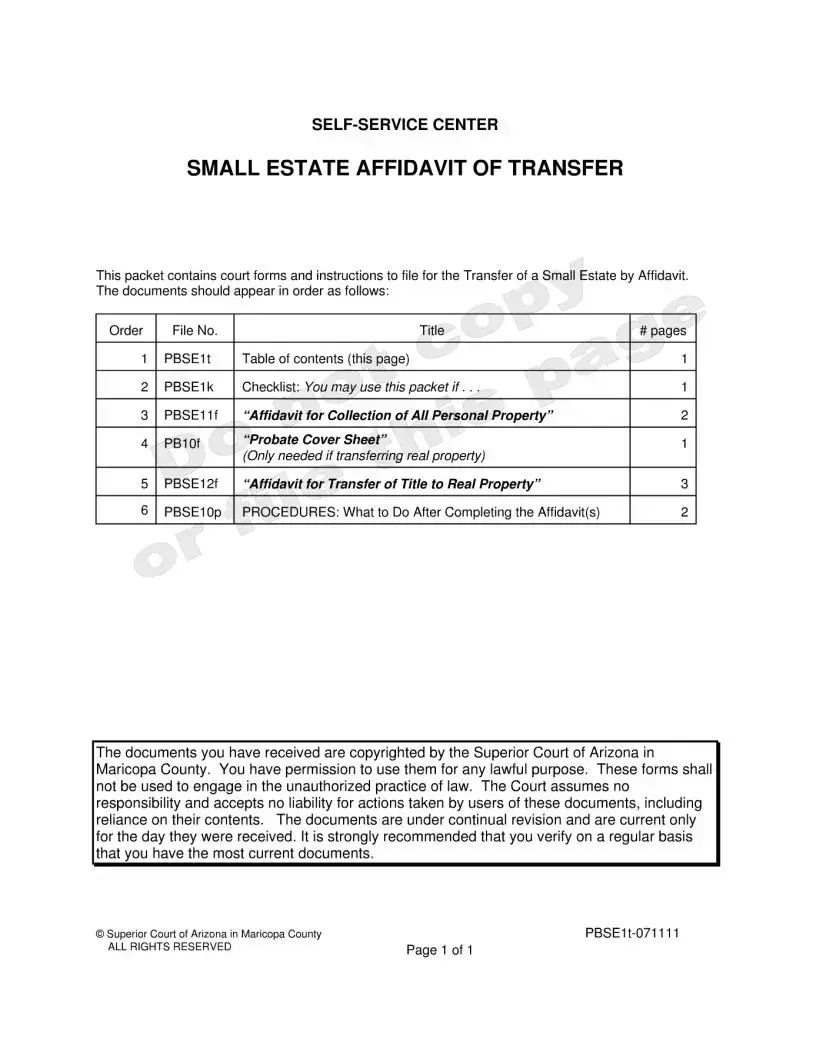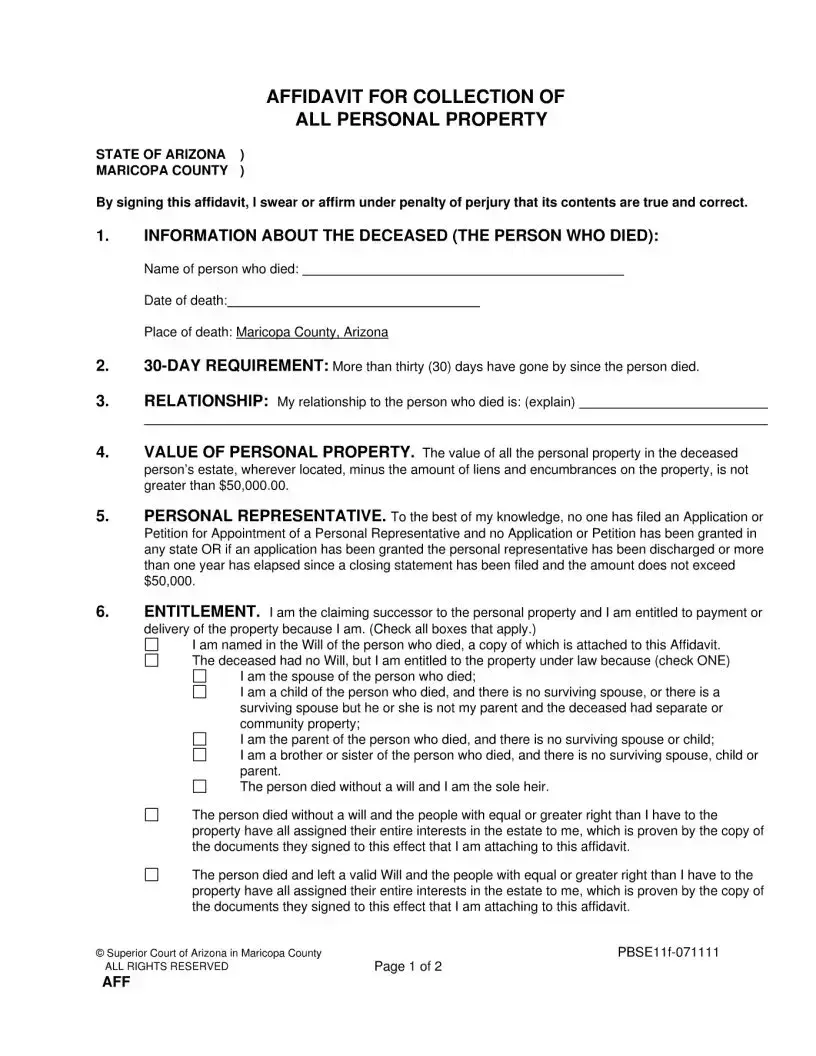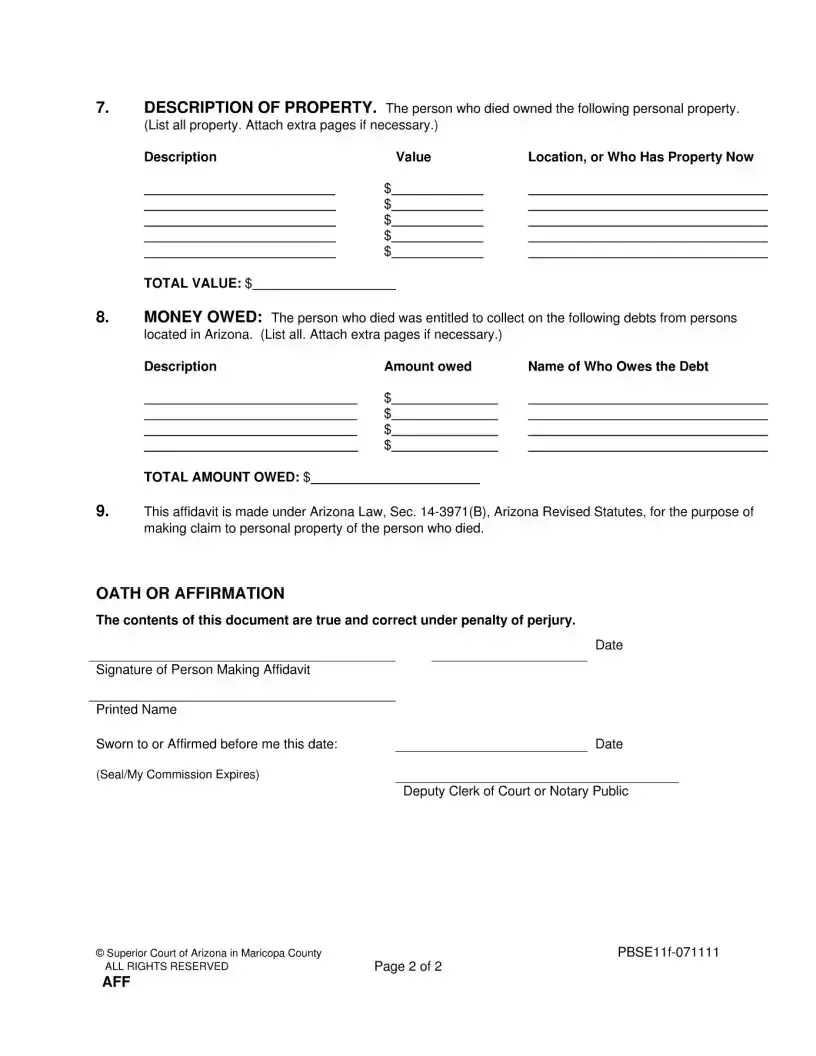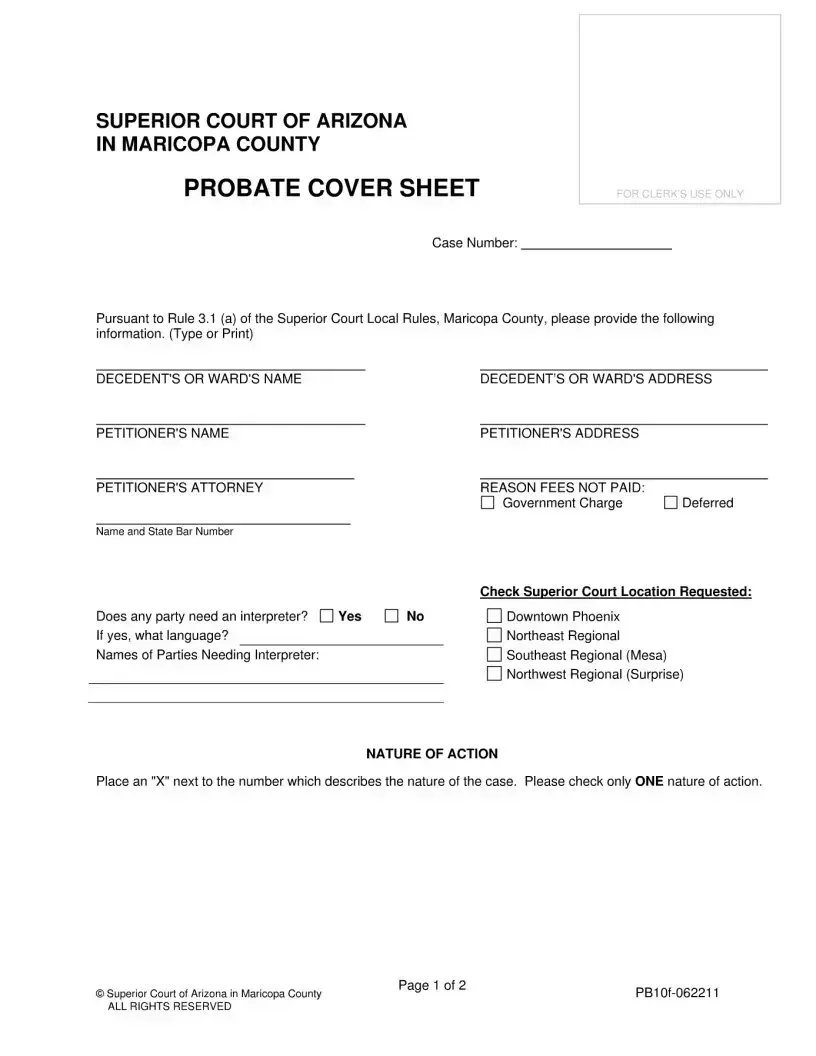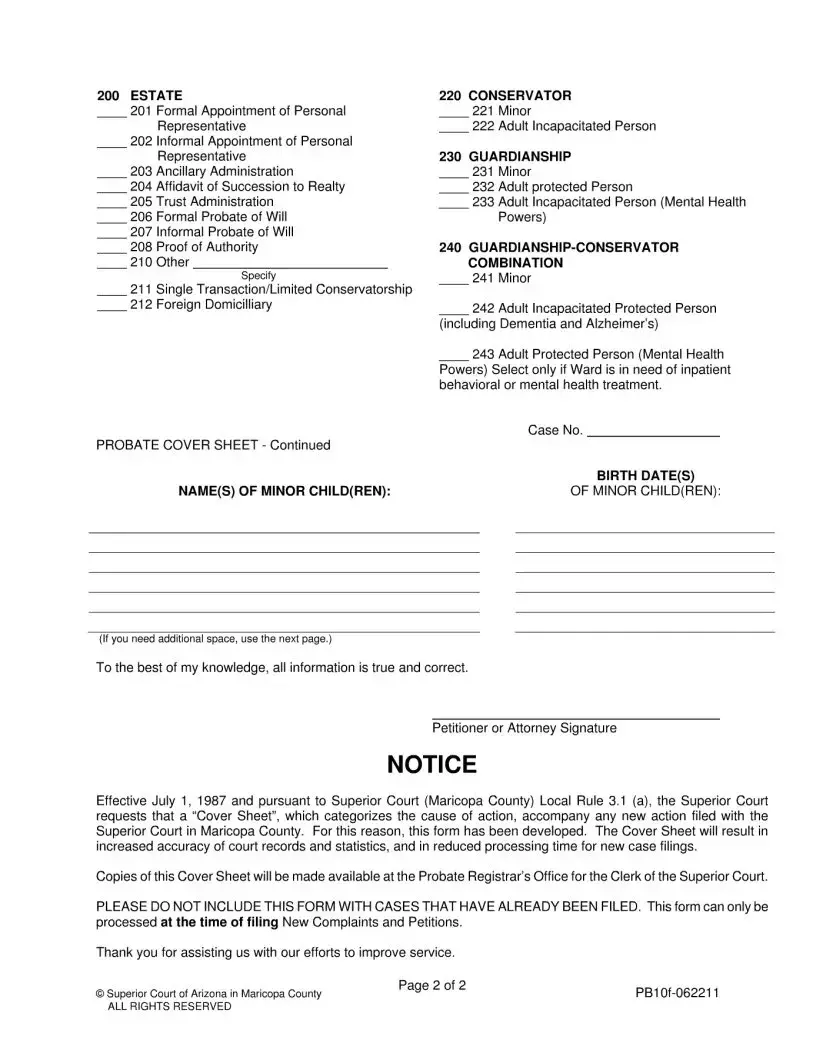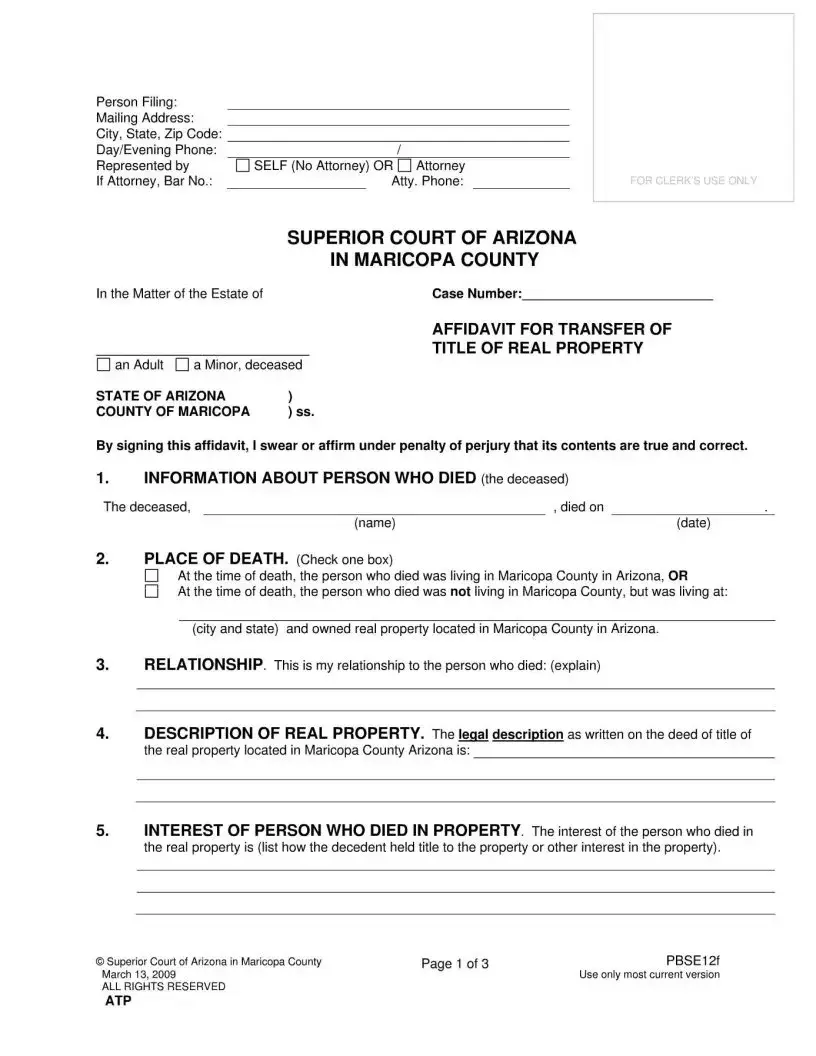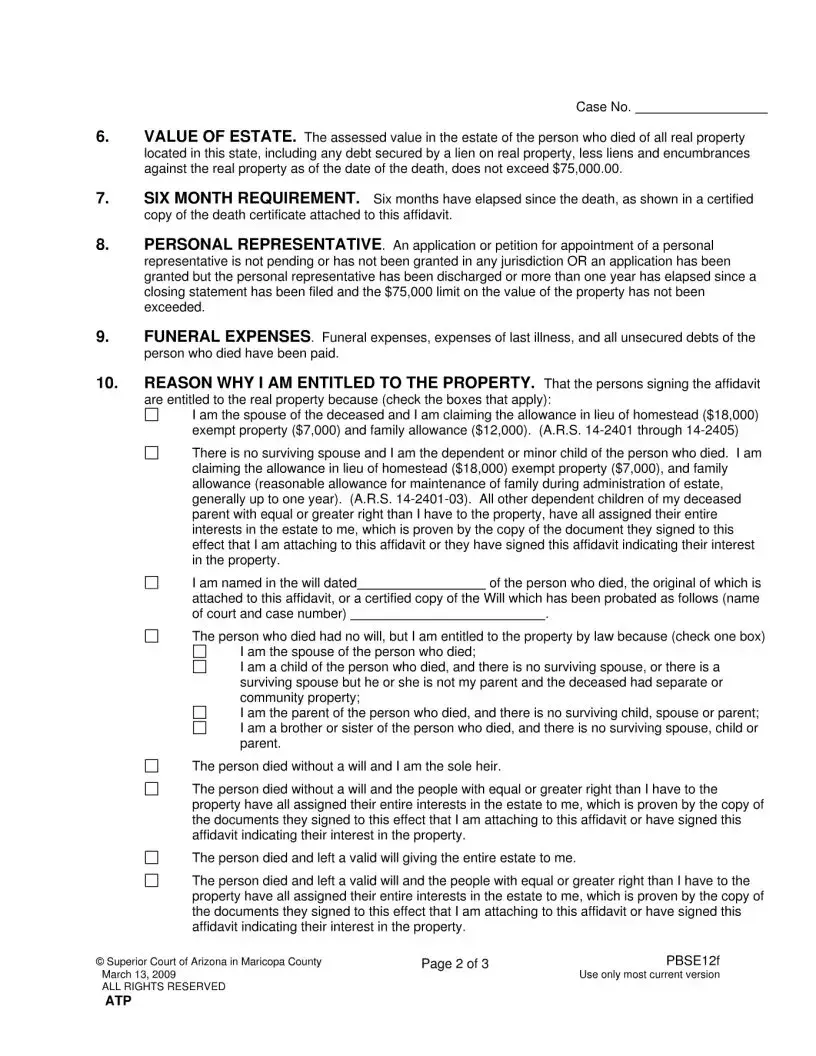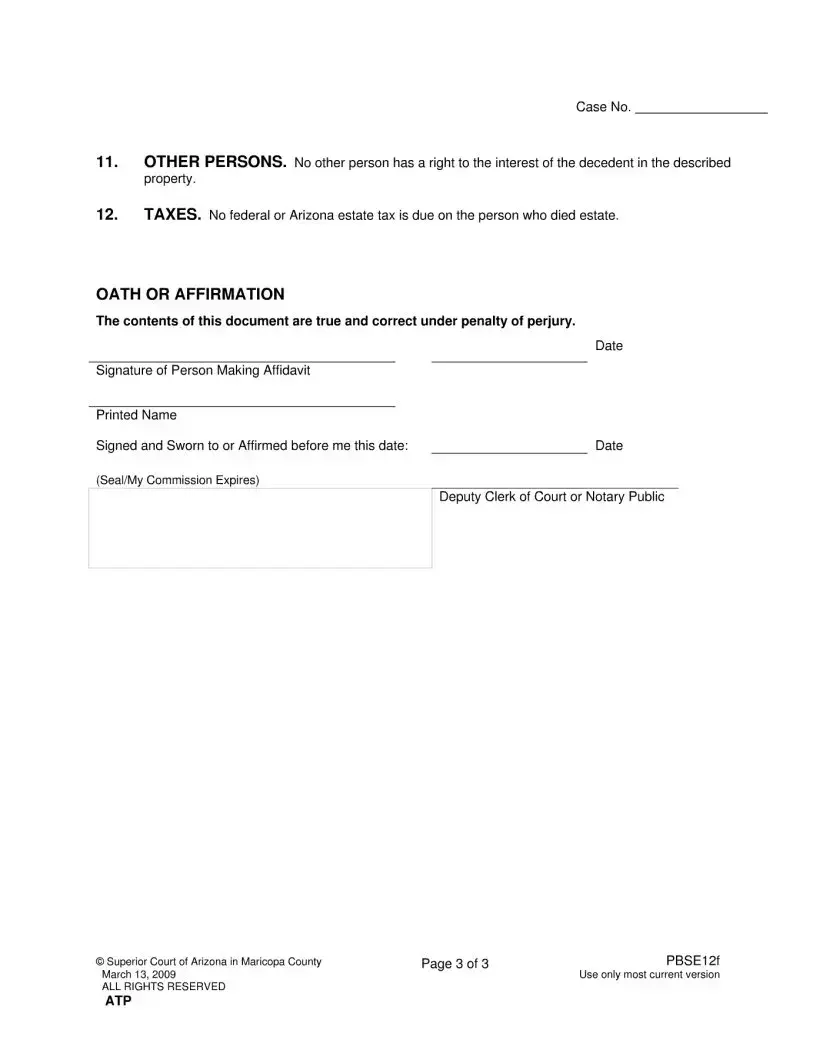The Arizona Small Estate Affidavit is similar to the California Small Estate Affidavit. Both documents allow heirs to claim property without going through the lengthy probate process. In California, the limit for the value of the estate is also set at $166,250, which is significantly higher than Arizona’s limits. Like Arizona, California requires that a certain period has elapsed since the decedent's death before the affidavit can be filed. This process simplifies the transfer of small estates for those who qualify, ensuring that heirs can access their inheritance more quickly.
Another comparable document is the Florida Small Estate Affidavit. Florida's version allows for the transfer of personal property valued at $75,000 or less, mirroring Arizona's approach. Both states require that at least 30 days pass after the death before filing the affidavit. The Florida affidavit also provides a streamlined process for heirs, enabling them to claim property without formal probate, thus reducing the administrative burden on families during a difficult time.
The Texas Small Estate Affidavit shares similar features with the Arizona form. In Texas, the affidavit can be used when the value of the estate is under $75,000. Like Arizona, Texas requires that at least 30 days have passed since the decedent's death. Both documents aim to expedite the transfer of property to rightful heirs, allowing them to bypass the more complex probate procedures, which can be time-consuming and costly.
The New York Affidavit for Collection of Personal Property is another document that serves a similar purpose. In New York, heirs can use this affidavit if the total value of the personal property is under $50,000. The requirement of waiting 30 days post-death is consistent with Arizona's regulations. This document simplifies the process for heirs, allowing for a more efficient transfer of assets without the need for probate court intervention.
In Illinois, the Small Estate Affidavit provides a similar function. Heirs can use this affidavit if the estate's value does not exceed $100,000. The Illinois process also requires that a minimum period has elapsed since the decedent's passing. Both Arizona and Illinois aim to facilitate the transfer of small estates, enabling heirs to access their inheritance more swiftly and with less legal complexity.
The Washington Small Estate Affidavit is another document that aligns closely with Arizona's form. In Washington, the limit for using the affidavit is $100,000 for personal property. Like Arizona, the process requires that at least 40 days have passed since the death. This document allows heirs to claim their rightful property without engaging in the probate process, thus easing the burden during a challenging time.
The Nevada Affidavit for Collection of Personal Property serves a similar purpose as the Arizona form. In Nevada, heirs can use the affidavit if the estate's total value is under $25,000. The requirement of a waiting period post-death is also a common feature. This document streamlines the process for heirs, allowing them to claim property without navigating through the complexities of probate court.
The Ohio Small Estate Affidavit is another comparable document. In Ohio, heirs can use the affidavit if the estate's value does not exceed $35,000. The requirement for a waiting period of 30 days after death is consistent with Arizona's guidelines. This affidavit simplifies the process for heirs, enabling a more efficient transfer of assets without the need for formal probate proceedings.
The Georgia Small Estate Affidavit is similar in its intent and function. In Georgia, the affidavit can be used when the estate is valued at $10,000 or less. The requirement of waiting 30 days after the decedent's death is a shared feature with Arizona. This document provides a streamlined method for heirs to claim their inheritance without the complications associated with probate, thus easing the transition during a difficult time.
Lastly, the South Carolina Small Estate Affidavit also mirrors the Arizona form. In South Carolina, heirs can utilize this affidavit if the estate's value is under $25,000. A waiting period of 30 days post-death is required, aligning with Arizona's regulations. This process allows heirs to efficiently access their inheritance while avoiding the lengthy probate process, providing a much-needed relief during a challenging period.
